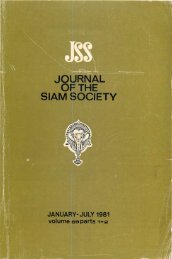
Mangrai's youngest son, ruler of Mong Nai returned to claim the throne, occupying Haripunjaya. He soon retired to Chiangrai and appointed his son Saen Phu as the Uparaja ( Viceroy) of Chiangmai. Disunity and ProsperityĬentral Chedi at Wat Doi Suthep, Chiang MaiĪround 1311, Mangrai died and was succeeded by his second son Grama, or Jayasangrama (Khun Hham). He also reduced to vassaldom and received tribute from areas of modern Northern Vietnam, principally in the Black and Red river valleys, and most of Northern Laos, plus the Sipsongpanna of Yunnan where his mother originated. Claimed territories of Mangrai's Lan Na include modern northern Thailand provinces (with exception of Phrae – which was under Sukhothai – and Phayao and Nan – the Kingdom of Payao), Kengtung, Mong Nai, and Chiang Hung (modern Jinghong in Yunnan). He founded Chiang Mai in 1296, expanding it to become the capital of Lan Na.

Leaving Lamphun due to heavy flooding, he drifted until settling at and building Wiang Kum Kam in 1286/7, staying there until 1292 at which time he relocated to what would become Chiang Mai. Mangrai then expanded to the south and subjugated the Mon kingdom of Hariphunchai (centered on modern Lamphun) in 1281. In 1262, Mangrai moved the capital from Ngoenyang to the newly founded Chiang Rai – naming the city after himself. Mangrai, the 25th king of Ngoenyang (modern Chiang Saen) of the Lavachakkaraj dynasty, whose mother was a princess of a kingdom in Sipsongpanna ("the twelve nations"), centralized the mueangs of Ngoenyang into a unified kingdom or mandala and allied with the neighboring Phayao Kingdom. Taksin of the Thonburi Kingdom finally conquered Lan Na in 1775 and broke it down into a number of tributary kingdoms. The Burmese rule gradually withdrew but then resumed as the new Konbaung Dynasty expanded its influence. Lan Na was ruled by successive vassal kings, though some enjoyed autonomy.

However, the Lanna Kingdom was weakened and became a tributary state of the Taungoo Dynasty in 1558. As a continuation of the kingdom of Ngoenyang, Lan Na emerged strong enough in the 15th century to rival the Ayutthaya Kingdom, with whom wars were fought. The cultural development of the people of the Northern Thai people had begun long before as successive kingdoms preceded Lan Na. In the Chinese History of the Yuan it is called Pa-pai-si-fu, mentioned first in 1292. The Pali chronicles refers to the kingdom as Yonarattha or Yonkarattha (Kingdom of the Yuon) or of Bingarattha (Kingdom of the Mae Ping).

The Lan Na or Lanna Kingdom ( Lanna : ᩋᩣᨱᩣᨧᩢᨠᩕᩃ᩶ᩣ᩠ᨶᨶᩣ, Northern Thai pronunciation:, "Kingdom of a Million Rice Fields" Thai : อาณาจักรล้านนา, rtgs : Anachak Lan Na, Thai pronunciation: Burmese : ဇင်းမယ် ပြည်, IPA: or ယွန်းပြည်, IPA: ) was an Indianized state centered in present-day Northern Thailand from the 13th to 18th centuries.


 0 kommentar(er)
0 kommentar(er)
